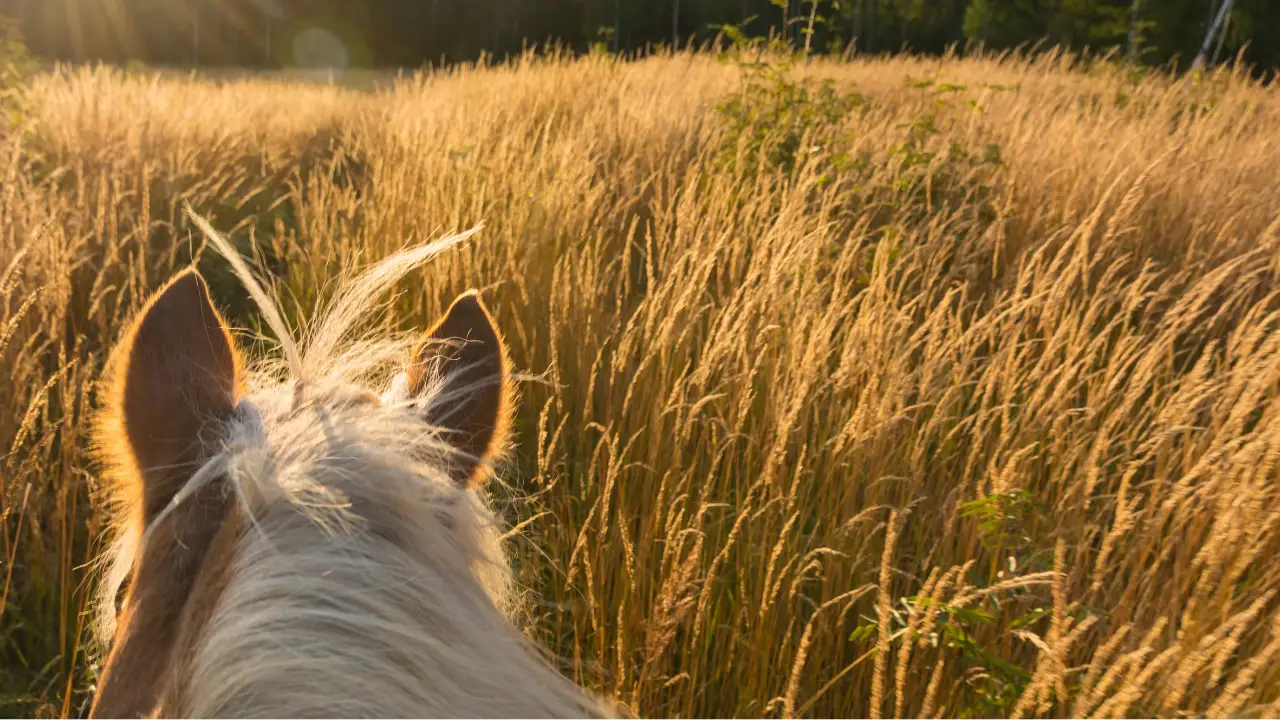10 Essential Horseback Riding Tips

Horseback riding is a delightful and fulfilling activity that requires skill, patience, and understanding. Whether you’re a beginner or an experienced rider, there’s always room for improvement and learning. These ten essential tips will help you enhance your riding experience, ensuring you and your horse enjoy every moment together. From mastering the basics to refining advanced techniques, these guidelines will aid you in becoming a more confident and competent rider.
1. Choose the Right Horse
Selecting the right horse is crucial for a safe and enjoyable riding experience. Consider your skill level and the horse’s temperament. Beginners should opt for a well-trained, calm horse that is accustomed to new riders. Additionally, matching the horse’s size and strength with your own is important for comfort and control. This choice sets the foundation for a positive riding journey, as a suitable horse will not only boost your confidence but also ensure safety.
Before committing to a horse, spend time observing and interacting with different horses to find one that suits your needs. It’s beneficial to seek guidance from experienced riders or instructors, as they can provide valuable insights into the horse’s behavior and suitability. Remember, a good match between rider and horse fosters a trusting and harmonious relationship, which is essential for effective communication and enjoyment during rides.
2. Wear Proper Riding Gear
Safety should always be a priority when horseback riding, and proper riding gear is a key component. Always wear a well-fitted helmet to protect your head in case of falls or accidents. Riding boots with a small heel are also essential, as they prevent your feet from slipping through the stirrups. Additionally, consider wearing gloves for better grip and comfort, especially during longer rides.
Beyond safety, the right gear enhances your riding experience. Comfortable, breathable clothing allows for ease of movement and prevents chafing. Avoid loose or flowing garments that could get caught on the saddle or equipment. Furthermore, investing in quality gear not only protects you but also shows respect for the sport and your horse, creating a professional and prepared appearance.
3. Learn Proper Mounting and Dismounting Techniques
Mastering the correct techniques for mounting and dismounting is fundamental in horseback riding. When mounting, always approach the horse calmly and from the left side, ensuring the saddle is secure and the girth is tight. Use a mounting block if necessary, as this reduces strain on the horse’s back and helps you get on smoothly. Once mounted, check your stirrups and reins before moving off.
Dismounting safely is just as important. Come to a complete stop, remove your feet from the stirrups, and swing your leg over the horse’s back without kicking the animal. Land softly on both feet, maintaining control of the reins to prevent the horse from walking away. Practicing these techniques not only keeps you safe but also shows respect for your horse by minimizing discomfort and confusion.
4. Focus on Your Posture
A correct riding posture is essential for balance and communication with your horse. Sit up straight with your shoulders back, maintaining a relaxed but firm grip on the reins. Keep your heels down and toes pointed slightly upward, which helps with balance and control. Your eyes should always look ahead, not down at the horse, as this helps anticipate movements and obstacles.
Good posture is not only about aesthetics but also about functionality. It allows for better communication with your horse through subtle cues and aids. Moreover, maintaining the correct posture reduces fatigue and the risk of injury, both for you and your horse. Regularly practicing and refining your posture will enhance your overall riding experience, making it more comfortable and effective.
5. Develop a Strong Seat
A strong seat is the foundation of effective horseback riding. It refers to your ability to sit deeply and securely in the saddle, using your core muscles to maintain stability. To develop a strong seat, practice riding without stirrups, which helps you rely more on your balance and core strength. Additionally, engage in exercises that strengthen your core, such as planks and leg lifts.
Having a strong seat allows you to communicate more effectively with your horse, as it helps you give clearer aids and remain stable during sudden movements or jumps. It also enhances your ability to absorb the horse’s motion, making the ride smoother and more comfortable for both you and the horse. Consistent practice and focus on developing a strong seat will significantly improve your riding skills.
6. Understand and Use the Aids Correctly
In horseback riding, aids are the signals you use to communicate with your horse. These include your hands, legs, seat, and voice. Understanding how to use these aids correctly is crucial for effective communication. For example, a gentle squeeze of the legs can signal the horse to move forward, while a light pull on the reins can indicate stopping or slowing down.
Consistent and clear use of aids helps prevent confusion and ensures your horse responds accurately to your commands. It’s essential to use aids with sensitivity and timing, as overuse or harshness can lead to misunderstandings or resistance from the horse. Practicing with a knowledgeable instructor can help refine your use of aids, making your riding more precise and harmonious.
7. Practice Transitions
Transitions are changes in pace or gait, such as from walk to trot or trot to canter. Practicing smooth and controlled transitions is an essential skill in horseback riding. To achieve this, give clear aids and maintain a balanced position throughout the transition. For instance, when transitioning from a trot to a canter, gently squeeze with your legs and give a slight release of the reins to encourage the horse to move forward.
Smooth transitions demonstrate your control and understanding of the horse’s movements. They also help in developing your horse’s responsiveness and obedience. Regular practice of transitions improves your coordination and timing, making your riding experience more fluid and enjoyable. It also prepares you and your horse for more advanced maneuvers and challenges.
8. Ride Different Horses
Riding different horses is an excellent way to improve your riding skills. Each horse has unique characteristics and requires different approaches, which can help you become a more adaptable and versatile rider. Riding various horses also prevents you from developing habits that might only work with one particular horse.
Experiencing different horses teaches you to adjust your aids and techniques according to the horse’s responsiveness and temperament. This adaptability is a valuable skill, especially if you plan to ride in different disciplines or compete. It also broadens your understanding of horse behavior and communication, making you a more well-rounded and confident rider.
9. Take Lessons with a Qualified Instructor
Even experienced riders can benefit from regular lessons with a qualified instructor. An instructor provides valuable feedback and guidance, helping you refine your technique and address any issues. They can introduce you to new skills and exercises, keeping your training varied and challenging.
Taking lessons also ensures that you are progressing safely and correctly. An instructor can spot mistakes or bad habits that you might not notice and provide corrective exercises. Additionally, lessons offer the opportunity to ask questions and receive personalized advice, making your learning experience more effective and enjoyable.
10. Build a Strong Bond with Your Horse
Building a strong bond with your horse goes beyond just riding; it involves spending time with your horse, grooming, and caring for them. A good relationship fosters trust and understanding, making your riding experience more harmonious and enjoyable. Horses are sensitive creatures and can sense your emotions and intentions, so treating them with kindness and respect is essential.
Spending time on the ground, such as grooming or simply being near your horse, helps build this bond. It also allows you to understand your horse’s personality and preferences, making it easier to communicate during rides. A strong bond not only enhances your riding skills but also enriches your overall experience with horses, making it more fulfilling and rewarding.
In conclusion, horseback riding is a beautiful blend of skill, communication, and connection. By following these ten essential tips, you can enhance your riding abilities and deepen your relationship with your horse. Whether you’re a beginner or an experienced rider, there’s always room to grow and enjoy this wonderful activity even more.






